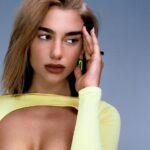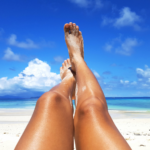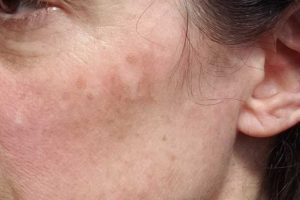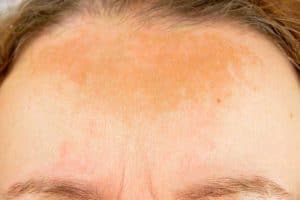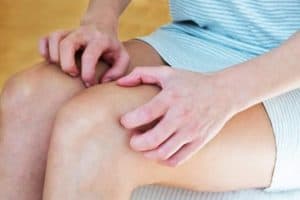Smooth skin is a sign of healthy skin. That is why it can be quite unnerving if you all of a sudden get itchy bumps. Maybe you have tried to treat it with anti-itch cream, but you find that it doesn’t solve the problem. So what are the itchy bumps on skin that come and go?
Itchy bumps on the skin that come and go are usually hives or urticaria. Some of them can be as small as a mosquito bite, and some can be a few inches in size. Hives often pop up in one place on the body, then go away, and then come back in a different place.
They may be single, or they may be plenty. They can also appear like dots that connect with one another. Other possible diagnoses of these itchy bumps on the skin that come and go could be eczema, psoriasis, or shingles.
It can be an uncomfortable experience to have these itchy bumps. You may find that the quality of your day-to-day living is affected by it. Read on to learn more about itchy bumps on the skin that come and go and how to treat them.
Itchy Bumps on Skin That Come and Go – Hives
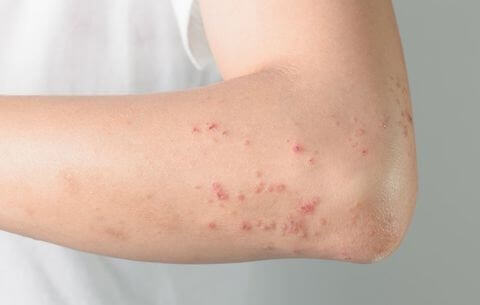
There are many different skin issues that have bumps that come and go; however, the most likely diagnosis is that they are hives. The description of itchy bumps on skin that come and go fits perfectly with hives.
Hives are itchy, and raised bumps on the skin that are often red in color. Some of these bumps are tiny, and some are a few inches in length. They typically appear out of nowhere.
There are some that appear on one part of the body and disappear, only to resurface again in another part a couple of hours later. This is a mild case of hives. On the other hand, in severe cases, these bumps come and go for many weeks, causing prolonged discomfort to the one who suffers from it.
What Causes Hives
Hives appear as the body’s reaction to something that irritates it. They come and gove when the body suspects a threat and goes overboard trying to battle it, therefore creating the itchy bumps. What causes it may be allergic or non-allergic in nature.
The more common type of hives is the non-allergic hives. There are various things that may be responsible for this, and some of these are:
- Extreme temperatures whether hot or cold
- Sunlight whether from direct sun or from a sunlamp
- Physical stress from exercise
- Emotional stress
- Pressure from the skin such as rubbing, scratching and tight-fitting clothing
- Virus and infection
Allergic hives are the less common type of hives, and one can pinpoint the cause of them. Some causes are:
- Plants specifically weeds and grass
- Latex
- Animal dander
- Some chemicals that are found in household products such as soap, lotion and detergents
- Insect bites
- Some foods like peanuts, shellfish, milk and eggs
- Medicines that are anti-biotic and are used for pain relief
How to Treat Hives
Treating hives means stopping the itching that it causes and avoiding the thing that triggers it. Below are some ways to treat hives.
For hives that are just mild:
- If you have hives and you feel the urge to itch, find something that can distract you from scratching. If it is your child who has it, then you need to provide play activities for the child to do so that he or she will not resort to scratching the hives which will certainly make it worse. Also gently explain to your child that scratching it will only make it worse.
- Take an OTC antihistamine. If you want reassurance on what to give to your child who has hives then you can simply call up your health provider for that.
- To get instant relief from the itchy bumps on the skin that come and go, put a cold compress to the area with hives. You can make the cold compress by wetting a washcloth and wringing it to remove the excess water. If you don’t get relief from the cold compress you can simply take a cold shower.
For hives that are severe:
- Your health provider may prescribe for you other medications such as a steroid in order to treat it. You may also be injected with a shot of epinephrine.
- If you are having other symptoms such as difficulty breathing, swallowing and vomiting then you need to call 911 immediately to get emergency help as these symptoms may be caused by anaphylactic shock caused by the allergic hives. It is crucial to get help right away if you notice these symptoms as experiencing anaphylactic shock can be life-threatening.
To learn more about itchy bumps on the skin that come and go, as well as how to treat them, see the below video. Dr. Stephen H. Mandy, M.D., completed his residencies at the University of Miami and Johns Hopkins University. He earned his medical degree at George Washington University.
How to Prevent Hives from Becoming Worse
If you want the itchy bumps that you are suffering from not to get worse and stop coming and going, then you need to take certain steps in order to do so.
Do not rub or scratch the skin, especially the part with hives. Get rid of your harsh body products and detergents and instead opt for a gentle or natural soap and detergent to avoid further irritation of the skin.
Put on clothes that are loose-fitting. Dress in warm clothes if you feel that you are sensitive to the cold. Dr. Stephen H. Mandy said, “wearing the right clothing is important to avoid skin irritation such as itchy bumps on the skin.” He also said wool and synthetic fibers such as polyester could cause irritation and itchiness, whereas cotton and bamboo fabrics are the least irritating.
If you have sensitive skin, it is important to apply sunscreen to your face and body. You should also dress in clothes that protect your body from the sun, such as long sleeves and pants.
Also, make sure to wash your hands well after touching any pet.
Hives that appear are typically not life-threatening. In fact, for every five people, one person gets it. But it is always good to know what you can do when you have it. This will allow you to stay calm in such a situation. When you are calm, you can clearly think about what you need to do in order to address it.
If it is your child who gets hives, then you won’t go in panic mode as well because you will know what to do to treat it or to give them relief for it.
How to Prevent Hives from Occurring Again
In order for you to prevent hives from appearing again, you need to basically pinpoint what triggers it and avoid those triggers. For example, keep a record of the foods that you found to be triggers for it and avoid those. Also, go through the events that occurred before you got hives so that you can identify from those events what triggered it.
For example, if before getting hives, the only different thing that you did was taking an antibiotic, then you can conclude that the antibiotic medicine was the trigger for it. Next time you may opt for a different kind of medicine to take.
When You Should Call Your Doctor
You can call your doctor if the antihistamine did not relieve you of your itching and your hives worsened or had additional symptoms. You may also need to call a doctor if the trigger for the hives is an insect bite, new food in your diet, or new medicine.
Itchy Bumps on Skin That Come and Go – Other Possible Diagnoses
While itchy bumps are typically caused by hives, there are other possible diagnoses. These itchy bumps can signal a different skin condition or illness that you may have.
Eczema is also characterized by itchy bumps that come and go and sometimes may even lead to blisters. This skin condition is also triggered by certain things like food, smoke, and pollen. There is no cure for it. Those who have it must avoid the triggers and manage with topical creams.
Psoriasis is an immune-mediated condition that produces red bumps, usually on the elbows and knees. For some people, such bumps are itchy. Just like with eczema, there is something that triggers it.
The dermatologist is the medical professional who confirms if the itchy red bumps that a person has is due to psoriasis. Psoriasis varies in its severity and appearance. If you have it, a dermatologist or doctor will be the one to determine what type you have and how severe it is.
Shingles is a disease that is triggered by the varicella-zoster virus, the same virus that is also responsible for chickenpox. Typically the red bumps that appear because of it are located as one single strip that can be found near the abdomen of the person.
Plant rash causes itchy skin bumps in a person who has them. There are three known plants that can cause them, and they are oak, sumac, and poison ivy. Many people who come in contact with them develop plant rash because of their resinous sap.
Conclusion – Itchy Bumps on Skin That Come and Go
It can be a shock to have itchy bumps on skin that come and go. These itchy bumps are likely to be hives, and therefore something must have triggered it. To treat it, you can take an over-the-counter antihistamine and put a cold compress on it.
While these itchy bumps are more commonly caused by hives, there are other conditions that can cause it in a person, and those are eczema, psoriasis, shingles, and plant rash. See a doctor immediately if you have more severe symptoms accompanying these bumps.

![Bruise Itches [Causes and Treatments for an Itchy Bruise] bruise itches](https://skincaregeeks.com/wp-content/uploads/2021/04/bruise-itches-150x150.jpg)
![Neutral Skin Tone Defined [and Best Colors for Neutral Skin] neutral skin tone](https://skincaregeeks.com/wp-content/uploads/2021/05/neutral-skin-tone-150x150.png)
